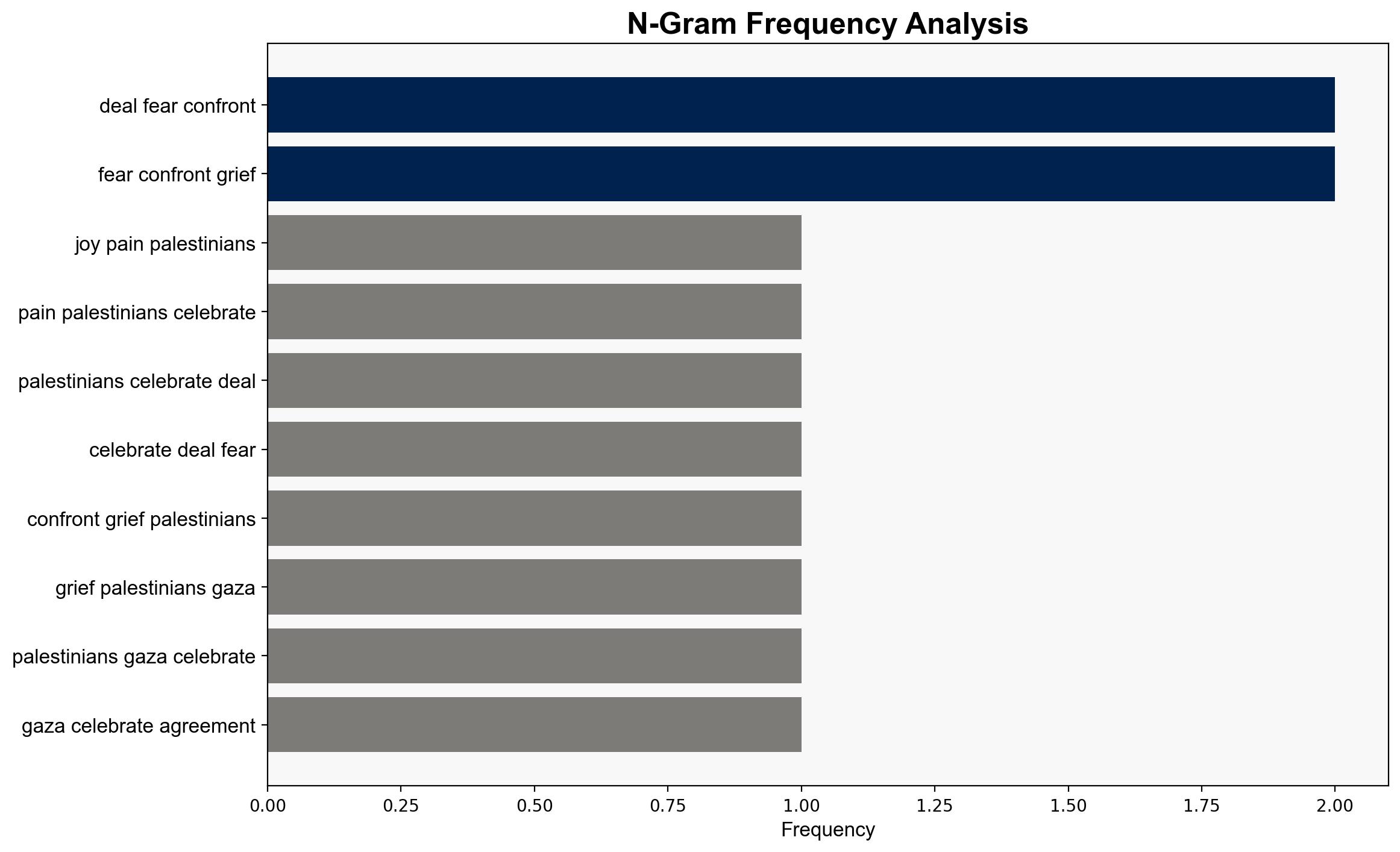‘Joy and pain’ Palestinians celebrate ceasefire deal – but fear confronting grief – BBC News
Published on: 2025-10-09
Intelligence Report: ‘Joy and pain’ Palestinians celebrate ceasefire deal – but fear confronting grief – BBC News
1. BLUF (Bottom Line Up Front)
The most supported hypothesis is that the ceasefire agreement, while providing immediate relief, is unlikely to lead to long-term peace due to deep-rooted grievances and unresolved issues. Confidence level: Moderate. Recommended action: Engage in multilateral diplomatic efforts to address underlying causes of conflict and support humanitarian aid to alleviate immediate suffering.
2. Competing Hypotheses
1. **Hypothesis A**: The ceasefire agreement will lead to a sustained peace process, reducing hostilities and fostering reconciliation between Israelis and Palestinians. This hypothesis assumes that both parties are committed to long-term peace and that international mediators will effectively support negotiations.
2. **Hypothesis B**: The ceasefire is a temporary measure that will not resolve underlying tensions, leading to a potential resurgence of conflict. This hypothesis is based on historical patterns of ceasefires failing to address core issues such as territorial disputes and political recognition.
3. Key Assumptions and Red Flags
– **Assumptions**: Hypothesis A assumes effective international mediation and genuine commitment from both parties. Hypothesis B assumes that historical grievances and political dynamics remain unchanged.
– **Red Flags**: The lack of detailed information on the terms of the ceasefire and the absence of a clear roadmap for addressing core issues are significant red flags. Additionally, the involvement of external actors with conflicting interests could undermine the process.
4. Implications and Strategic Risks
– **Patterns**: Historical ceasefires have often been temporary, with underlying issues remaining unaddressed. This pattern suggests a high risk of renewed conflict.
– **Cascading Threats**: Failure to achieve lasting peace could lead to regional instability, increased refugee flows, and potential escalation involving neighboring countries.
– **Geopolitical Dimensions**: The involvement of international actors, including the U.S., could influence the outcome, either positively or negatively, depending on their commitment and strategy.
5. Recommendations and Outlook
- **Mitigate Risks**: Support diplomatic initiatives that address core issues such as borders, security, and political recognition.
- **Exploit Opportunities**: Leverage international support to provide humanitarian aid and rebuild infrastructure in affected areas.
- **Scenario-Based Projections**:
– **Best Case**: Successful negotiations lead to a comprehensive peace agreement.
– **Worst Case**: Breakdown of the ceasefire results in renewed hostilities and regional instability.
– **Most Likely**: Temporary reduction in violence with ongoing tensions and sporadic clashes.
6. Key Individuals and Entities
– Donald Trump: Announced the agreement.
– Daniel Abu Tabeekh: Provided local perspective from Jabalia refugee camp.
– Mousa: Expressed desire for peace from Deir al Balah.
– Dr. Muhammad Rayan: Commented on the humanitarian impact from Al Aqsa Hospital.
– Husam Zomlot: Provided insight from the Palestinian mission in the UK.
7. Thematic Tags
national security threats, regional focus, conflict resolution, humanitarian aid





